The Protect Wildlife Activity (PWA) is a wildlife conservation initiative funded by the United States Agency for International Development (USAID) covering several biodiversity hotspots in the Philippines. As the program comes to close, a final performance evaluation is deemed important as the results could help inform similar natural resource conservation activities at present or in the future. The results can also contribute to the growing body of evidence on good practices and a better understanding of the enabling and hindering factors in biodiversity conservation and anti-wildlife trafficking. It is in this light that the Southeast Asian Regional Center for Graduate Study and Research in Agriculture (SEARCA), through its Emerging Innovation for Growth Department (EIGD), in partnership with USAID, conducted a two-part learning event to disseminate the key findings of the evaluation and highlight the lessons learned from the PWA on 26 March 2021 via Zoom and Facebook Live.
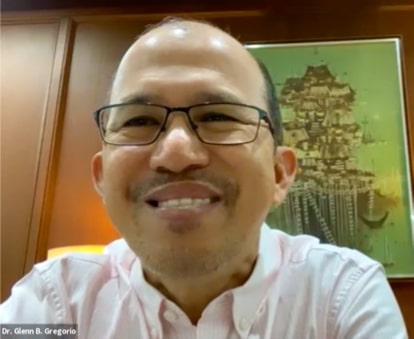 In his welcome remarks, Dr. Glenn B. Gregorio, SEARCA Director, emphasized the importance of the event and said “protecting wildlife and biodiversity is more than ever crucial, especially in this time of pandemic”. He added that SEARCA strongly supports USAID, not only to protect biodiversity in the Philippines, but the rest of Southeast Asia and beyond. He thanked USAID for partnering with SEARCA in this venture and hope that there are more opportunities to work together and be on the lookout for ways these kinds of multi- and trans-disciplinary approaches can impact not just wildlife and biodiversity, but also agricultural and rural development.
In his welcome remarks, Dr. Glenn B. Gregorio, SEARCA Director, emphasized the importance of the event and said “protecting wildlife and biodiversity is more than ever crucial, especially in this time of pandemic”. He added that SEARCA strongly supports USAID, not only to protect biodiversity in the Philippines, but the rest of Southeast Asia and beyond. He thanked USAID for partnering with SEARCA in this venture and hope that there are more opportunities to work together and be on the lookout for ways these kinds of multi- and trans-disciplinary approaches can impact not just wildlife and biodiversity, but also agricultural and rural development.
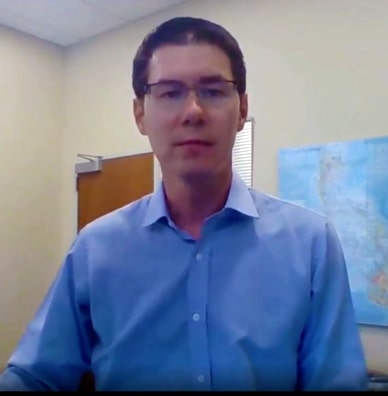 Dr. John Edgar, USAID Environment Office Chief, shared that “USAID is a strong partner of the Philippine government in conserving the countries’ rich biodiversity resources and believes that conservation is an essential component to building prosperous stable and equitable societies,” hence the development of PWA. He also explained the importance of the project evaluation, which is to measure the project effectiveness, relevance, and efficiency and to enable those who design and implement projects to refine the designs and introduce improvements for future efforts. More importantly, he expressed that the findings and results as presented in the learning event will be really helpful and applicable for the stakeholders. He also expressed hope that there will be more opportunities for future collaborations.
Dr. John Edgar, USAID Environment Office Chief, shared that “USAID is a strong partner of the Philippine government in conserving the countries’ rich biodiversity resources and believes that conservation is an essential component to building prosperous stable and equitable societies,” hence the development of PWA. He also explained the importance of the project evaluation, which is to measure the project effectiveness, relevance, and efficiency and to enable those who design and implement projects to refine the designs and introduce improvements for future efforts. More importantly, he expressed that the findings and results as presented in the learning event will be really helpful and applicable for the stakeholders. He also expressed hope that there will be more opportunities for future collaborations.
During the first part of the program, two speakers were invited to present a brief overview of the PWA and to discuss the overall results and synthesis of the evaluation of the six PWA sites covered.
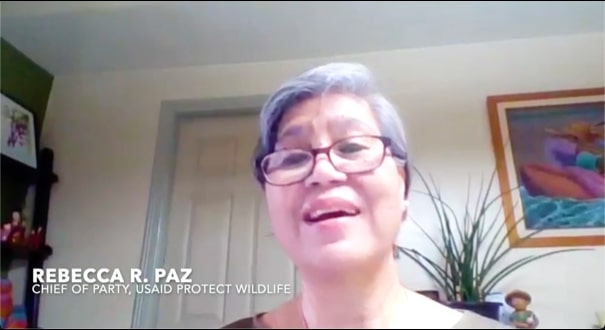 Ms. Rebecca Paz, the PWA Chief of Party, presented a brief background and accomplishments of the PWA. She emphasized that “there is a connection between biodiversity conservation the flow of ecosystems goods and services and the improvement of human well-being. The preservation of biodiversity in protected areas and in coastal and marine areas supports livelihoods and the growth of the local economy, thus PWA is not about protecting nature from people but protecting nature for the people.” She then discussed the Theory of Change (ToC) and the five strategic approaches they employed to achieve the project’s target outcomes. She reported that they were able to reach all of their targets even though they were greatly affected by the onset of the pandemic. In addition, one of the factors that contributed greatly to the success of PWA was the cooperation of various agencies, like the Department of Environment and Natural Resources (DENR), local government units (LGUs), state universities and colleges (SUCs), private organizations, and even people’s organization (PO), Ms. Paz stressed.
Ms. Rebecca Paz, the PWA Chief of Party, presented a brief background and accomplishments of the PWA. She emphasized that “there is a connection between biodiversity conservation the flow of ecosystems goods and services and the improvement of human well-being. The preservation of biodiversity in protected areas and in coastal and marine areas supports livelihoods and the growth of the local economy, thus PWA is not about protecting nature from people but protecting nature for the people.” She then discussed the Theory of Change (ToC) and the five strategic approaches they employed to achieve the project’s target outcomes. She reported that they were able to reach all of their targets even though they were greatly affected by the onset of the pandemic. In addition, one of the factors that contributed greatly to the success of PWA was the cooperation of various agencies, like the Department of Environment and Natural Resources (DENR), local government units (LGUs), state universities and colleges (SUCs), private organizations, and even people’s organization (PO), Ms. Paz stressed.
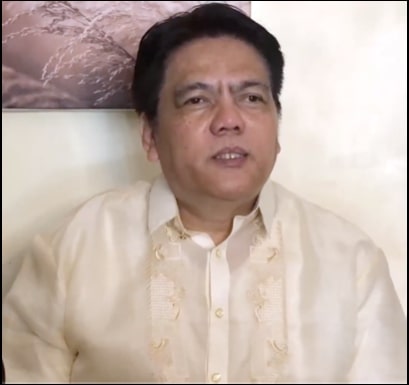 On the other hand, Dr. Ernesto Brown, Project Leader for the Final Performance Evaluation of PWA, presented the key findings of the evaluation, which is interesting because it is a ToC-based evaluation and Protect Wildlife is a very significant initiative of USAID on biodiversity conservation and wildlife protection. The evaluation will thus be beneficial for those in the field of evaluation and would interest those who would like to know how PWA performed. One of the purposes of the evaluation was to see whether the ToC pursued by PWA was valid or not. Dr. Brown reported that “there are adequate evidence in terms of output and outcomes which prove the validity of the theory of change and causal links of PWA. There were social, economic, institutional, and technological factors which enhanced the validity of the TOC and causal links as identified in the evaluation. In addition, the programmatic assumptions and implementation strategies were able to showcase adequately and appropriately the validity of the TOC. Lastly, the strategies were found effective and efficient in achieving the outputs and outcomes and the prospect for sustainability is strong.”
On the other hand, Dr. Ernesto Brown, Project Leader for the Final Performance Evaluation of PWA, presented the key findings of the evaluation, which is interesting because it is a ToC-based evaluation and Protect Wildlife is a very significant initiative of USAID on biodiversity conservation and wildlife protection. The evaluation will thus be beneficial for those in the field of evaluation and would interest those who would like to know how PWA performed. One of the purposes of the evaluation was to see whether the ToC pursued by PWA was valid or not. Dr. Brown reported that “there are adequate evidence in terms of output and outcomes which prove the validity of the theory of change and causal links of PWA. There were social, economic, institutional, and technological factors which enhanced the validity of the TOC and causal links as identified in the evaluation. In addition, the programmatic assumptions and implementation strategies were able to showcase adequately and appropriately the validity of the TOC. Lastly, the strategies were found effective and efficient in achieving the outputs and outcomes and the prospect for sustainability is strong.”
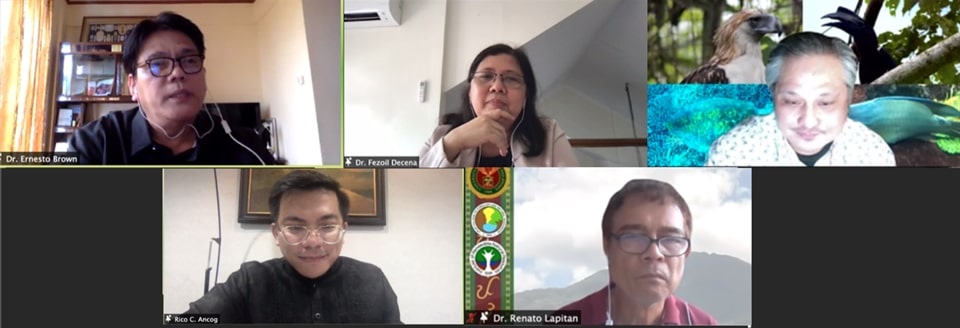
To cap the morning session, Dr. Rico C. Ancog, SEARCA Operations Consultant for EIG, moderated the open forum, which was very productive and extensive. The project team composed of Dr. Brown, Dr. Fezoil Decena, Dr. Renato Lapitan, and Dr. Juan Carlos Gonzalez responded to the questions from the audience, which ranged from the methodologies, benefits, and challenges of a ToC-based evaluation to the best practices of the PWA, which contributed greatly to the increase in income of the beneficiaries and reduced the threats to wildlife and biodiversity as observed by the evaluation team.
The second part of the program showed videos documenting the sites covered by the evaluation, namely: Pasonanca Natural Park (PNP), Mt. Mantalingahan Protected Landscape (MMnPL), Puerto Princesa Subterranean River National Park (PPSRNP), Cleopatra’s Needle Critical Habitat (CNCH), Mt. Matutum Protected Landscape, and Sarangani Bay Protected Seascape (SBPS). The videos showcased the efforts and contributions of the PWA to the various stakeholders.
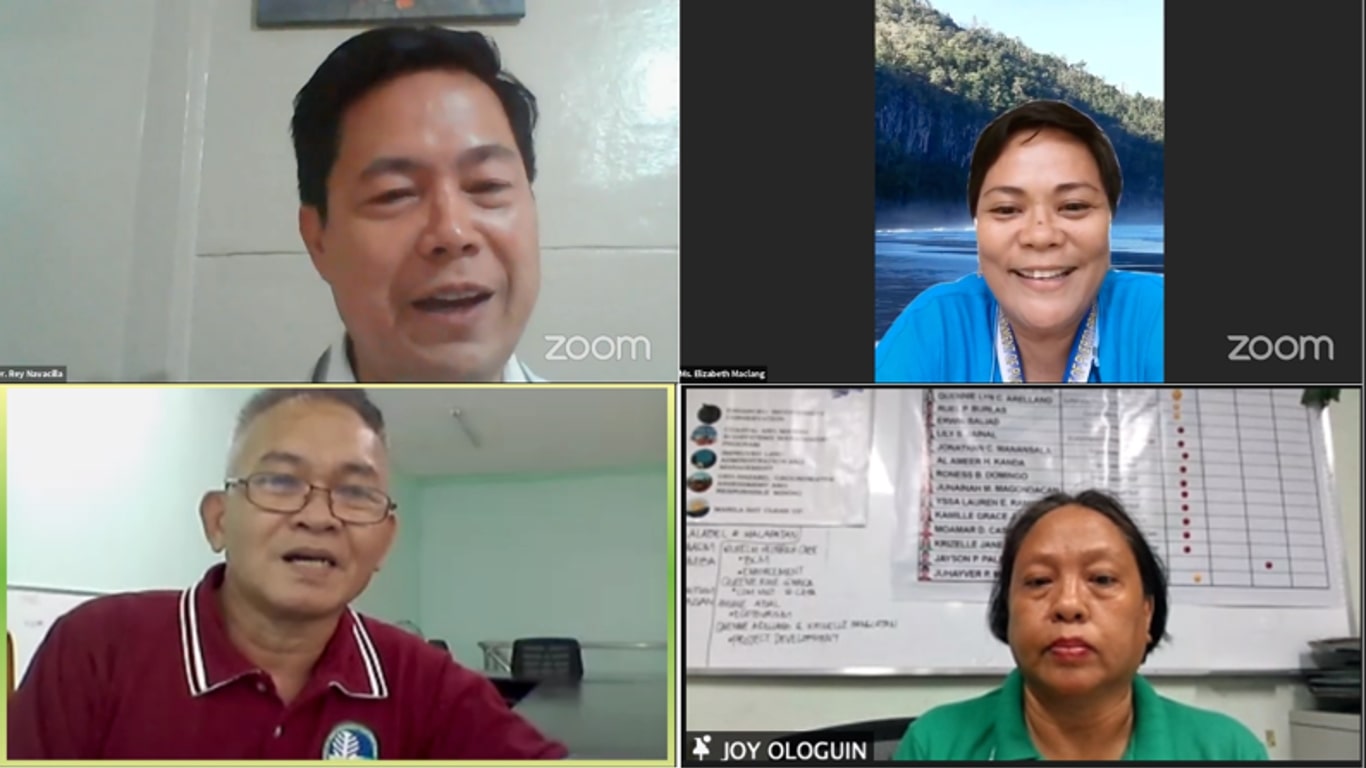 The videos were complemented by key local implementing partners who shared their plans after the PWA. Dr. Rey Navacilla, DAI Global Site Manager for PNP, said in addition to what have been presented for the PNP, the formulation of the Ayala and Manicahan watershed management and development plan will be instrumental in looking at the potential of these dams as sources of water for Zamboanga City, which will help improve PNP’s water resource sustainablitity. The Protected Area Supervisor (PASu) of PPSRNP expressed that they will prioritize the use of camera traps that help the enforcers monitor the activities inside the protected area as well as the continuation of the payment of ecosystem services (PES). For MMPL, Forester Efren Hibaler, PASu, explained that they are focusing on the creation of a GIS team for DENR to facilitate the zoning system in the protected area. They will utilize spatial planning and other technologies, which they gained from the PWA. Ms. Joy Ologuin, PASu for SBPS, emphasized that they are going to continue the efforts of the PWA, especially the strengthening of enforcers, with the enforcement protocol developed, and institutionalizing the PES.
The videos were complemented by key local implementing partners who shared their plans after the PWA. Dr. Rey Navacilla, DAI Global Site Manager for PNP, said in addition to what have been presented for the PNP, the formulation of the Ayala and Manicahan watershed management and development plan will be instrumental in looking at the potential of these dams as sources of water for Zamboanga City, which will help improve PNP’s water resource sustainablitity. The Protected Area Supervisor (PASu) of PPSRNP expressed that they will prioritize the use of camera traps that help the enforcers monitor the activities inside the protected area as well as the continuation of the payment of ecosystem services (PES). For MMPL, Forester Efren Hibaler, PASu, explained that they are focusing on the creation of a GIS team for DENR to facilitate the zoning system in the protected area. They will utilize spatial planning and other technologies, which they gained from the PWA. Ms. Joy Ologuin, PASu for SBPS, emphasized that they are going to continue the efforts of the PWA, especially the strengthening of enforcers, with the enforcement protocol developed, and institutionalizing the PES.
 To close the event on behalf of USAID, Dr. Albert P. Aquino, Monitoring and Evaluation Specialist, thanked everyone and said “protecting our wildlife doesn't end here in our collective efforts as well as the stories that we tell. After all, these collective efforts to protect wildlife is a continuing story and still is evolving so please let's do our share.”
To close the event on behalf of USAID, Dr. Albert P. Aquino, Monitoring and Evaluation Specialist, thanked everyone and said “protecting our wildlife doesn't end here in our collective efforts as well as the stories that we tell. After all, these collective efforts to protect wildlife is a continuing story and still is evolving so please let's do our share.”
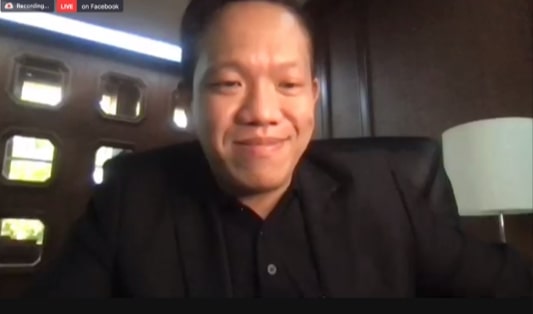 Dr. Joselito G. Florendo, SEARCA Deputy Director for Administration, officially closed the event. In his message, he expressed gratitude to USAID, the organizers, project consultants and staff, and the participants for this significant achievement to contribute to a more sustainable natural resource management. one of SEARCA’s priority areas. He expressed hope that the lessons gained from the evaluation will be significant for similar natural resource conservation activities currently being implemented and to future programs on protection and conservation of wildlife and biodiversity.
Dr. Joselito G. Florendo, SEARCA Deputy Director for Administration, officially closed the event. In his message, he expressed gratitude to USAID, the organizers, project consultants and staff, and the participants for this significant achievement to contribute to a more sustainable natural resource management. one of SEARCA’s priority areas. He expressed hope that the lessons gained from the evaluation will be significant for similar natural resource conservation activities currently being implemented and to future programs on protection and conservation of wildlife and biodiversity.
The event had more than 60 participants via Zoom and more than 700 unique views on the SEARCA Facebook page. The event may be replayed through the links below:
AM Session: https://www.facebook.com/searcaattain/videos/3904696922920557
PM Session: https://www.facebook.com/seameo.searca/videos/120697543305904